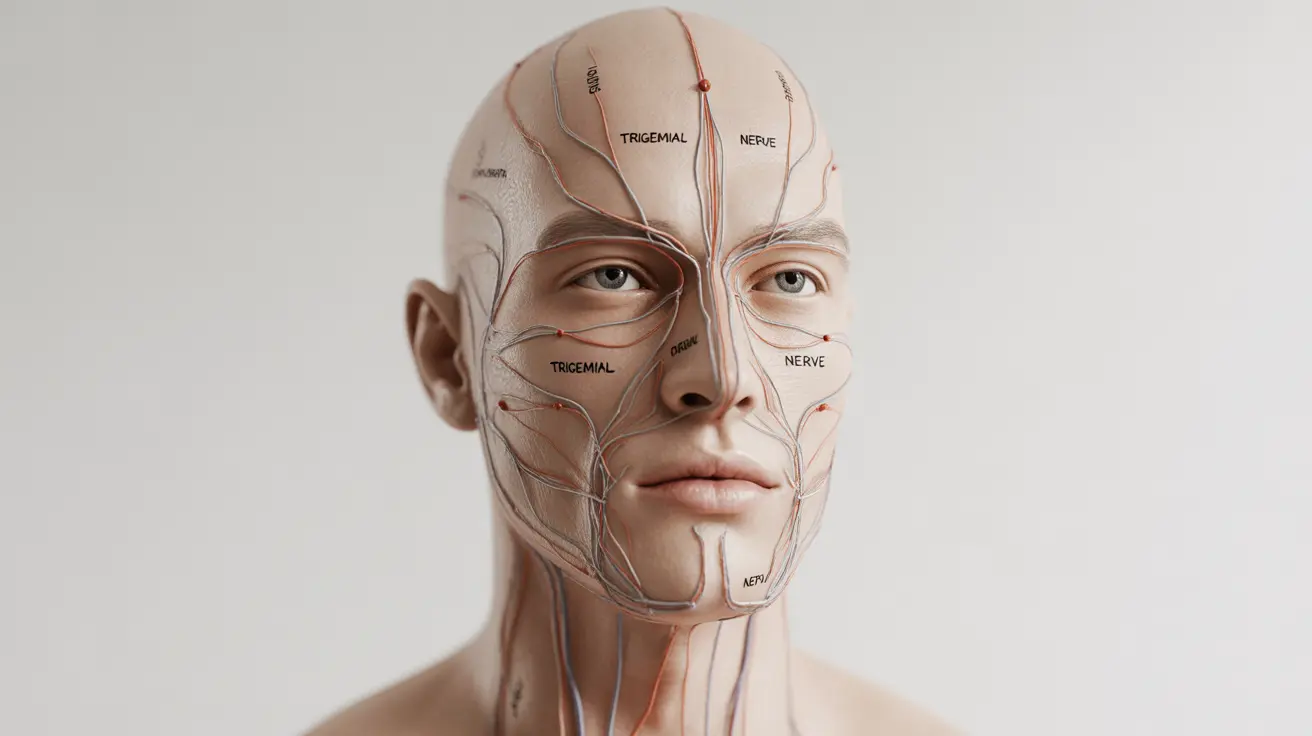Facial pain can be complex and challenging to diagnose accurately, particularly when it comes to distinguishing trigeminal neuralgia from other conditions. Understanding the key differences between trigeminal neuralgia and similar conditions is crucial for proper diagnosis and treatment.
This comprehensive guide explores various conditions that may present symptoms similar to trigeminal neuralgia, helping you better understand when to seek specialized medical evaluation and what diagnostic factors healthcare providers consider.
Common Conditions Mistaken for Trigeminal Neuralgia
Several medical conditions can produce facial pain patterns that may initially seem similar to trigeminal neuralgia. Understanding these distinctions is crucial for accurate diagnosis and appropriate treatment.
Dental Problems and TMJ Disorders
Dental issues and temporomandibular joint (TMJ) disorders frequently cause facial pain that patients might mistake for trigeminal neuralgia. However, dental pain typically:
- Persists for longer periods
- Responds to temperature changes
- Usually has an identifiable trigger point
- Often accompanies visible dental problems
- May improve with dental treatment
Headache Disorders
Various types of headaches can present with facial pain similar to trigeminal neuralgia, including:
- Cluster headaches
- Migraines with facial pain
- Tension headaches
- Occipital neuralgia
These conditions typically have different pain patterns, duration, and associated symptoms compared to trigeminal neuralgia.
Key Distinguishing Features of Trigeminal Neuralgia
Trigeminal neuralgia has several characteristic features that help differentiate it from other conditions:
- Sharp, electric shock-like pain
- Brief episodes lasting seconds to minutes
- Trigger zones that spark pain when touched
- Pain typically affects one side of the face
- Pain follows trigeminal nerve distribution
When to Seek Medical Evaluation
Certain symptoms and situations warrant immediate medical attention and possibly neurological evaluation:
- Severe, uncontrolled facial pain
- Progressive worsening of symptoms
- Neurological symptoms beyond pain
- Failed response to initial treatments
- Bilateral facial involvement
Diagnostic Process and Testing
Healthcare providers use various methods to accurately diagnose trigeminal neuralgia and rule out other conditions:
- Detailed medical history
- Physical and neurological examination
- MRI imaging with contrast
- Blood tests to rule out systemic conditions
- Specialized nerve studies when indicated
Frequently Asked Questions
What medical conditions are commonly mistaken for trigeminal neuralgia due to similar facial pain symptoms?
Common conditions mistaken for trigeminal neuralgia include dental problems, TMJ disorders, cluster headaches, migraines, facial infections, and post-herpetic neuralgia. Each has distinct characteristics that help differentiate them from trigeminal neuralgia.
How can I tell the difference between trigeminal neuralgia and dental pain or a toothache?
Dental pain typically lasts longer, responds to temperature changes, and often has a clear source like decay or infection. Trigeminal neuralgia pain is usually brief, sharp, and electric shock-like, without obvious dental problems.
What symptoms help distinguish trigeminal neuralgia from migraine or cluster headaches?
Trigeminal neuralgia typically causes brief, severe, electric shock-like pain in specific facial areas, while migraines and cluster headaches usually last longer and may include additional symptoms like nausea or eye tearing.
When should I get an MRI or neurological exam to rule out other causes of facial pain like tumors or multiple sclerosis?
Seek immediate medical evaluation if you experience persistent facial pain, neurological symptoms, bilateral facial involvement, or if initial treatments aren't effective. These situations warrant comprehensive neurological examination and possibly MRI imaging.
What are common triggers and pain characteristics that doctors use to diagnose trigeminal neuralgia accurately?
Doctors look for specific triggers like light touch, chewing, or cold air, and characteristic pain patterns including brief, severe, electric shock-like pain affecting specific areas of the face. The pain typically follows the distribution of the trigeminal nerve branches.




